Introduction
The heart is the centre of the body, responsible for removing waste products from the system and pumping blood, nutrients, and oxygen. It works 24 hours a day and never takes a break. With increasing stress, irregular routines, unhealthy diets, and erratic sleep schedules, the number of heart diseases is on the rise. The incidence of heart disease is increasing among younger individuals, with more than 20% of heart patients now under the age of 40 1.
It is widely accepted that regular physical activity is beneficial for heart health. Yoga is an increasingly popular form of exercise that benefits not only the body but also the mind 2. There are several yoga asanas that are associated with decreased stress levels, improved blood circulation, and increased metabolism, helping you keep your heart healthy 3.
In this blog, we will explore some potentially beneficial asanas in yoga for heart health and a few other physical activities that may help improve heart function.
Why is Yoga Good for a Healthy Heart?
Through a combination of physical postures (asana), controlled breathing (pranayama), and meditation (dhyana), yoga for heart can help address all the physical training aspects related to heart health 2.Yoga can help boost heart health in the following ways:
- Yoga is found to reduce the secretion of cortisol, a hormone that the body produces in response to stress. High levels of cortisol affect heart function, which can cause narrowing of arteries and an increase in blood pressure 3.
- Yoga can help lower inflammation. Inflammation promotes plaque buildup in the arteries, also known as atherosclerosis. Atherosclerosis causes an increase in blood pressure and a risk of clots making their way to the heart 4.
- Yoga can help support heart function by regulating blood pressure and heart rate. It also helps improves blood circulation, thereby promoting better oxygen delivery to the heart and other organs5.
- Yoga can also help in balancing blood sugar 6 and bad cholesterol 7 levels, which increase the likelihood of having heart disease 8.
- Yoga can help improve one’s quality of sleep 9, which is important to maintain well-being and heart health 10.
- With its integrated breathing techniques, yoga is shown to improve lung capacity, making it easier for the heart to provide oxygen to the body tissues 11.
- Yoga improves mindfulness, stress, and helps control cravings. These are beneficial tools in alleviating habits like smoking, which is a risk factor for heart disease 12,13.
Other than these, yoga helps increase strength, endurance, flexibility and improves concentration and focus. It also aids in weight loss and toning the body. Following yoga steps carefully and taking things slowly can help derive maximum benefits from yoga.
Top Yoga Asanas to Improve Heart Health
If you are wondering which yoga is best for heart, you should know that there are several yoga asanas that are simple to practise and can help boost your heart health. Following are some yoga asanas for heart that you can try out: 14,15,16
1. Tadasana- Mountain pose
It comes from the word – tada meaning “mountain”. It is also known as a State of Balance (Samasthiti). This is an ideal pose for beginners, and those who have a limited range of motion.
How to Perform the Pose:
- Stand straight with legs together, hands by your sides, back straight, and gaze forward.
- Stretch your arms upward, keeping them parallel with palms facing each other, and slowly raise your heels to stand on your toes.
- Stretch your body upward as much as possible and hold the position for a few seconds.
- Lower your heels to the floor first, then bring your arms down to your sides and relax.
This asana helps improve blood circulation and heart function. It potentially benefits by regulating the heart rate and blood pressure and is shown to help avoid the occurrence of fainting episodes 5, 17.
2. Adho Mukha Shvanasana- Downward Facing Dog Pose
It comes from the words- adho which means “down”, mukha which means “face” and svana which is “dog” in Sanskrit because of its similarity to the way a dog stretches when getting up.
How to Perform the Pose:
- Start by lying on your stomach with your body flat against the ground. Palms should be placed at the bottom of ribs with elbows tucked inwards.
- Exhale and engage your core, while lifting your torso off the floor into an upside-down V shape, keeping hands shoulder-width apart.
- Keep your legs as straight as possible, pressing heels towards the floor, allowing full lengthening of the spine.
- Hold for 30-90 seconds, then inhale into a plank pose as your lower back into the starting position.
This asana helps enhance blood circulation in the body, particularly the upper part including the heart and the brain, promoting better supply of oxygen and nutrients to the heart, thereby boosting heart health 18.
3. Makarasana- The Crocodile Pose
Makarasana is a posture that induces relaxation. In this posture, the body resembles the shape of a crocodile. In Sanskrit makara means crocodile.
How to perform the pose:
- Start by lying in a prone position.
- Keep the legs comfortably apart, heels facing inward, and toes pointing outward.
- Fold your arms, placing your elbows one over the other, and rest your head on your arms while breathing normally.
- Remove the right hand from the left shoulder and place it along the right side of the body, followed by the left hand from the right shoulder and place it along the left side of the body.
- Bring your feet closer together and return to the starting position.
This asana promotes deep breathing using the diaphragm muscles which helps regulate pulse rate and enhance oxygenation, thereby supporting lung and heart health 5,19.
4. Matsyasana- The Fish Pose
Matsya is literally translated as ‘fish’. By bending backwards in a seated position one can take up the posture of a fish.
How to perform the pose:
- Starting position: Sit with your legs folded in a comfortable position and bend backward, supporting the body with arms and elbows.
- Lift the chest, take the head back, lowering it to the floor, and the place middle part of the head on the ground.
- Hold the big toes ensuring your elbows touch the ground.
- Releasing position: This involves sequentially reversing the steps. Starting with lowering the chest with the help of elbows, then bringing the head to the ground, unlocking legs, and finally coming back to the seated position.
This asana is believed to open-up the heart and promote deep breathing and relaxation. By regulating the autonomic nervous system, it can help balance heart rate and blood circulation, thereby improving the respiratory and cardiovascular systems 13.
5. Trikonasana- The Triangle Posture
Trikona in Sanskrit literally translates to a ‘triangle’. In this asana, the body makes the shape of a triangle, hence, it is called Trikonasana.
How to perform the pose:
- Move your legs 1-2 feet apart and stretch your arms sideways to shoulder level, keeping them parallel to the floor.
- Bend to the left from the waist and place your left hand on your left foot.
- Stretch your right arm upward, keeping both arms at a 180° angle. Maintain this position for 5-10 seconds with normal breathing.
- For an optimal stretch, bend your right arm further toward the left side, forming a 90° angle.
- To release, lift your left palm, straighten your trunk, lower your arms, bring your feet together, and relax.
This asana promotes flexibility and balance and aid in stress management, which is beneficial for heart health. In addition, it opens up the chest muscles, enhancing lung capacity and supporting and circulatory system 18, 20.
6. Vrikshasana- The Tree Posture
The Sanskrit word vriksha means ‘tree’, thus, this is the ‘Tree Posture’. In the imagination of the tree, the feet seem like roots, legs are the trunk, arms are the branches and leaves, and, head as top of the tree. All together make the posture in the shape of a tree.
How to Perform the Pose:
- Stand with feet together and arms by your sides. Bend your right knee and place the sole of your right foot on the inner left thigh, with toes pointing downward.
- Balance on your left foot and raise both arms overhead, joining palms together, or bring them in front of the chest in a Namaskara posture. Hold for 10–15 seconds.
- Lower your arms by your sides and bring your right foot back to the floor.
- Repeat the pose on the other leg.
This pose helps boost blood circulation in the body and tones the muscles of the legs. It also aids in improving balance and flexibility, thereby improving focus and mindfulness, which can be beneficial or relaxation and even quitting adverse habits 18.
7. Vajrasana- Diamond Pose
The Sanskrit word Vajra means thunderbolt or diamond like. This is a seated asana that strengthens the muscles of the lower back, thigh, boosts metabolism, and improves circulation.
How to Perform the Pose:
- Kneel on the floor with your knees together and weight resting on the shins, knees and parts of the feet.
- Bring your toes together, with heels separated, and lower your hips into the inner sides of your feet.
- Keep your spine straight and chest lifted. Hands should be placed on top of the knees with palms facing down.
- Close your eyes and breathe normally. Maintain focus on your breath.
- Hold the pose for at least 5 minutes. It is ideal to practice directly after meals.
This pose enhances blood supply to vital organs like the heart, improving its efficiency. It enhances blood circulation throughout the body, which is supportive of good health 21.
8. Shavasana- Corpse Pose
Shavasana is a traditional relaxation posture that resembles a resting body. The Sanskrit word Shava means ‘dead body,’ symbolizing complete relaxation. This pose is practiced at the end of a yoga session to promote deep rest and rejuvenation.
How to Perform the Pose:
- Lie supine on the floor with legs apart at a comfortable distance and hands about six inches away from the body, palms facing upward.
- Keep your fingers naturally relaxed and eyes gently closed.
- Breathe slowly and deeply, keeping the head straight and body still.
- Remain in the pose for a few minutes, allowing complete relaxation.
This relaxation pose helps the body reset, soothes the mind, and lessens the stress reaction. It helps regulate the heart rate and general well-being even when done for a brief period of time 18.
9. Vakrasana – Twisted Pose
The Sanskrit word Vakra means ‘twist’. This is a seated asana where the spine is twisted, giving it its name.
How to Perform the Pose:
- Sit with your legs extended straight in front of you, keeping your spine straight, and relax your body.
- Bend the left knee towards your chest, inhale and bring your left foot and place it outside your right knee. Twist your upper body to the left and place your right hand outside the left knee.
- Take a deep breath, hold the position for 5–10 seconds, and with the help of your right elbow, deepen the twist as much as possible.
- Exhale, release the pose, straighten the spine, and relax in the original pose with legs extended straight. Repeat on the other side.
This asana stretches the spine and improves posture 22. Especially when performed on the right side, it helps regulate heart rate and blood pressure, supporting heart health 13.
10. Surya Namaskar
Last but not the least. The king of all yogasanas- Suryanamaskar. As the name indicates it is a sun salutation. It follows a cycle of 12 steps with focus on inhaling when starting the step and exhaling on ending the step. Together, all the steps and poses work on all muscle groups of the body like arms, legs, and back. Stand erect, feet together, palms joined in Namaskara Mudra at the chest in prayer pose/ pranamasana.
- Inhale, raise arms overhead and slightly bend backward to perform Hasta Uttanasana.
- Exhale, bend forward, placing palms on the floor, forehead near knees.
- Inhale, extend the right leg back, bend the left knee, and keep the left foot between palms.
- Exhale, bring the left leg back, raise buttocks, and form an inverted V shape.
- Lower knees, chest, and chin to the ground keeping buttocks raised. This is called Ashtanga Namaskara and is an important part of the cycle.
- Inhale, push the chest forward, arch the back, and look up into the cobra pose/ bhojangasana.
- Exhale, raise buttocks, lower the head between arms, and place heels on the floor into the Adho Mukha Svanasana or downward-facing dog pose. Now the cycle will take one’s towards the starting point.
- Inhale, extend the left leg back, bend the right knee, and keep the right foot between palms.
- Exhale, bring the left foot forward, straighten knees, and bend forward with palms on the floor to perform.
- Inhale, raise arms and trunk, bend backward with arms stretched up.
- Exhale, and return to an erect position, joining palms in Namaskara Mudra at the chest 15.
It is found that performing the sequence of asanas in Surya Namaskar improves circulation, regulates blood pressure and strengthens the heart 27. It also helps regulate hormone levels and blood pressure that are beneficial for the heart 23. Plus, it helps burn a lot of calories (230 calories in 30 minutes), helping in weight loss, which helps cut the risk of heart disease 16.
Although yoga asanas for heart have been shown to be effective in boosting health, its ideal to discuss with your doctor before you incorporate them in routine to ensure their safety or you. Also, practising them under a trained professional can help you better perform the intricacies of poses and breathing associated with each asana and avoid unnecessary straining of muscles or risk of injury.
Best Exercises for Heart Health Other than Yoga
To boost heart health, the American Heart Association encourages engaging in any form of regular physical activity, aiming for at least 150 minutes of moderate-intensity or 75 minutes of vigorous aerobic activity weekly. Regular exercise strengthens the heart muscles and lungs and is linked with better cardiovascular health 11.
Besides yoga for heart, some other exercises that aid in boosting heart health include:
- Moderate-Intensity Aerobic Exercise: These exercises make your heart beat faster than usual, without too much effort for a longer time. Walking, dancing, climbing stairs, and swimming are aerobic exercises that are good for heart health. These improve the blood circulation and make the heart strong 24.
- High- Intensity Aerobic Exercise: These exercises involve short bursts of very fast activity. High-intensity interval training (HIIT), fast running, and cycling are exercises that strengthen the heart muscles and improve endurance 24.
- Resistance Training (Strength Training): These exercises involve resistance or weight training and have a good effect on body composition. Even simple exercises like squats, push-ups, and chin-ups aid in improving strength. They not only help manage weight but also create a leaner muscle mass 25. Moreover, strength training improves circulation and helps the heart become stronger 26.
- Stretching Exercises: Flexibility workouts benefit musculoskeletal health, which helps avoid muscular issues and joint pain in the long run. These include standing on one foot, balance walking, and exercises like tai chi (a form of moving meditation where one has to slowly move the body while breathing deeply) 25. Stretching helps keep you fit and allow you to perform other more rigorous forms of exercise. It also helps boost your heart health by helping relax the blood vessels and improving blood flow 27.
- Breathing Exercises: Focusing on breathing and just observing it while doing any work has immense benefits for a healthy body and mind. Mindfulness and relaxation support in keeping your heart healthy 25.
Remember, incorporating small changes in your lifestyle can go a long way. Just focus on being active in your daily routine, such as walking or cycling instead of driving for groceries, taking the stairs, doing quick stretches, taking regular breaks from sitting, and going for a short walk after lunch and dinner. These smaller steps support you in achieving your health goals faster and better!
Conclusion
Yoga is a complete mind-body exercise that can improve one’s heart health. With a combination of exercise, meditation, and controlled breathing it can reduce stress levels, improve blood circulation, and increase metabolism, all of which strengthen the heart. The asanas mentioned in this blog work on different parts and help increase circulation throughout the body. They work on regulating your heart rate and blood pressure and induce a state of relaxation and mindfulness that have a positive impact on heart health. But remember, yoga asanas for heart or any other body part, take time and practice to be effective. The key is to get the most out of each session. Consulting your healthcare provider to ensure safety and following proper technique can help your derive the maximum benefits from these age-old practises.
Frequently Asked Questions (FAQs)
Are there any side effects of doing yoga for heart?Side effects of yoga are rare if done properly. However, the common side effects one can notice are soreness, pain, muscles injuries and tiredness. It is advisable to consult your healthcare provider first and perform yoga under guidance 28.
Which asanas should be avoided in yoga for heart patients?Yoga in heart patients should be practised after the doctor’s consultation. After cardiac procedures and surgeries, some limitations may be advised. Moreover, it is always best to avoid rigorous or continuous forms of yoga, yoga classes in heated rooms, and exercises where one has to hold the breath. They should also avoid inversion postures (except legs up the wall), where the heart is placed above the head 29.
Can yoga cure chronic diseases?Yoga may not cure chronic diseases like heart disease, stroke, or COPD. However, it can be a beneficial add on to the ongoing management. Yoga has proven to help manage the symptoms and improve the well-being of individuals with regular practice 30.
What is the best time for practicing yoga?Early morning is the best time for practicing yoga as per the Hatha Yoga Pradipika, a Sanskrit text for practice of yoga. Daily practice of minimum 30 minutes is important to receive the necessary benefits 31.
What long to wait after eating before doing yoga?It is recommended to perform yoga on an empty stomach. However, for individuals with diabetes and taking medicines, it is advisable to have light snacks before yoga to prevent blood sugar levels from becoming too low 32.
References
- Yang J, Biery DW, Singh A, Divakaran S, DeFilippis EM, Wu WY, Klein J, Hainer J, Ramsis M, Natarajan P, Januzzi JL, Nasir K, Bhatt DL, Di Carli MF, Blankstein R. Risk Factors and Outcomes of Very Young Adults Who Experience Myocardial Infarction: The Partners YOUNG-MI Registry. Am J Med. 2020 May;133(5):605-612.e1. doi: 10.1016/j.amjmed.2019.10.020. Available at: https://pmc.ncbi.nlm.nih.gov/articles/PMC7210047/
- Guddeti RR, Dang G, Williams MA, Alla VM. Role of Yoga in Cardiac Disease and Rehabilitation. J Cardiopulm Rehabil Prev. 2019 May;39(3):146-152. doi: 10.1097/HCR.0000000000000372. PMID: 31021995. https://pubmed.ncbi.nlm.nih.gov/31021995/
- Thirthalli J, Naveen GH, Rao MG, Varambally S, Christopher R, Gangadhar BN. Cortisol and antidepressant effects of yoga. Indian J Psychiatry. 2013 Jul;55(Suppl 3):S405-8. doi: 10.4103/0019-5545.116315. https://pmc.ncbi.nlm.nih.gov/articles/PMC3768222/
- Shete SU, Verma A, Kulkarni DD, Bhogal RS. Effect of yoga training on inflammatory cytokines and C-reactive protein in employees of small-scale industries. J Educ Health Promot. 2017 Aug 9;6:76. doi: 10.4103/jehp.jehp_65_17. https://pmc.ncbi.nlm.nih.gov/articles/PMC5561768/
- Krishna BH, Pal P, G K P, J B, E J, Y S, M G S, G S G. Effect of yoga therapy on heart rate, blood pressure and cardiac autonomic function in heart failure. J Clin Diagn Res. 2014 Jan;8(1):14-6. doi: 10.7860/JCDR/2014/7844.3983. Epub 2014 Jan 12. PMID: 24596712. Available from: https://pmc.ncbi.nlm.nih.gov/articles/PMC3939525/
- Yang K, Bernardo LM, Sereika SM, Conroy MB, Balk J, Burke LE. Utilization of 3-month yoga program for adults at high risk for type 2 diabetes: a pilot study. Evid Based Complement Alternat Med. 2011;2011:257891. doi: 10.1093/ecam/nep117. https://pmc.ncbi.nlm.nih.gov/articles/PMC3096458/
- Shantakumari N, Sequeira S, El Deeb R. Effects of a yoga intervention on lipid profiles of diabetes patients with dyslipidemia. Indian Heart J. 2013 Mar-Apr;65(2):127-31. doi: 10.1016/j.ihj.2013.02.010. https://pubmed.ncbi.nlm.nih.gov/23647889/
- Brown JC, Gerhardt TE, Kwon E. Risk factors for coronary artery disease. [Updated 2023 Jan 23]. In: StatPearls [Internet]. Treasure Island (FL): StatPearls Publishing; 2025 Jan–. Available from: https://www.ncbi.nlm.nih.gov/books/NBK554410/.
- Bankar MA, Chaudhari SK, Chaudhari KD. Impact of long-term yoga practice on sleep quality and quality of life in the elderly. J Ayurveda Integr Med. 2013 Jan;4(1):28-32. doi: 10.4103/0975-9476.109548. https://pmc.ncbi.nlm.nih.gov/articles/PMC3667430/
- Lopes CP, Danzmann LC, Moraes RS, Vieira PJC, Meurer FF, Soares DS, Chiappa G, Guimarâes LSP, Leitão SAT, Ribeiro JP, Biolo A. Yoga and breathing technique training in patients with heart failure and preserved ejection fraction: study protocol for a randomized clinical trial. Trials. 2018 Jul 28;19(1):405. doi: 10.1186/s13063-018-2802-5. https://pmc.ncbi.nlm.nih.gov/articles/PMC6064087/
- American Heart Association. Stress and heart health [Internet]. Dallas (TX): American Heart Association; [cited 2025 Mar 26]. Available from: https://www.heart.org/en/healthy-living/healthy-lifestyle/stress-management/stress-and-heart-health
- Bock BC, Dunsiger SI, Rosen RK, Thind H, Jennings E, Fava JL, Becker BM, Carmody J, Marcus BH. Yoga as a Complementary Therapy for Smoking Cessation: Results From BreathEasy, a Randomized Clinical Trial. Nicotine Tob Res. 2019 Oct 26;21(11):1517-1523. doi: 10.1093/ntr/nty212. PMID: 30295912. https://pubmed.ncbi.nlm.nih.gov/30295912/
- Bhavanani AB, Ramanathan M, Balaji R, Pushpa D. Comparative immediate effect of different yoga asanas on heart rate and blood pressure in healthy young volunteers. Int J Yoga. 2014 Jul;7(2):89-95. doi: 10.4103/0973-6131.133870 https://pubmed.ncbi.nlm.nih.gov/25035617/
- Lacerda D. 2,100 Asanas: The Complete Yoga Poses [Internet]. New York: Black Dog & Leventhal Publishers; 2015 [cited 2025 Mar 25]. Available from: https://terebess.hu/english/2100-Asanas.pdf
- National Council of Educational Research and Training (NCERT). Train Yourself in Yoga [Internet]. New Delhi: NCERT; 2019 [cited 2025 Mar 25]. Available from: https://ncert.nic.in/pdf/publication/otherpublications/tiyhwlups1.pdf
- Mody BS. Acute effects of Surya Namaskar on the cardiovascular & metabolic system. J Bodyw Mov Ther. 2011;15(3):343-7. doi:10.1016/j.jbmt.2010.05.001. https://www.sciencedirect.com/science/article/abs/pii/S1360859210000562
- Rao B, Gowlikar V, Vooturi S, et al. “Tadasana” yoga maneuver for preventing vasovagal syncope recurrences: a pilot study. J Am Coll Cardiol EP. 2022 Feb;8(2):253–4. doi:10.1016/j.jacep.2021.12.007. Available from: https://www.jacc.org/doi/10.1016/j.jacep.2021.12.007#:~:text=In%20the%20Tadasana%20group%2C%2061,with%20no%20adverse%20events%20reported.
- Gupta A, Joshi ND, Kumar A, Laishram V. The role of yoga in enhancing cardiovascular health. Int. J. Creat. Res. Thoughts. 2025 Mar;13(3):99. Available from: https://www.ijcrt.org/papers/IJCRTAX02020.pdf
- Verma CV, et al. Effectiveness of crocodile breathing versus prone position in patients with COVID-19: A pilot study. Indian J Respir Care. 2022;11(3):219–23. doi:10.4103/ijrc.ijrc_2_22. Available from: https://www.ijrc.in/abstractArticleContentBrowse/IJRC/30551/JPJ/fullText
- Gangwal J, Kholiya S, Jatoliya V, Bhatnagar V. Significance of Trikonasana in healthy life. Int J Trend Sci Res Dev. 2019;4(1):80– Available from: https://www.ijtsrd.com/papers/ijtsrd26547.pdf
- Thakur V, Bhatnagar V. Vajrasana and its physioanatomical aspect. Int Ayurvedic Med J. 2016 Jul;4(7):1334. Available from: https://www.iamj.in/posts/images/upload/1329_1334.pdf
- Yoga as a preventive measure for lifestyle disease. [Internet]. Pune: Puna International School; [cited 2025 Mar 28]. Available from: http://punainternationalschool.com/assets/upload/ck-images/Unit-3.pdf
- Prasanna Venkatesh L, Vandhana S. Insights on Surya Namaskar from its origin to application towards health. J Ayurveda Integr Med. 2022 Apr-Jun;13(2):100530. doi:10.1016/j.jaim.2021.10.002. Available from: http://pmc.ncbi.nlm.nih.gov/articles/PMC8814407/#:~:text=Surya%20Namaskar%20is%20an%20ideal%20exercise%20for%20optimum%20level%20of%20fitness.&text=Intervention%20group%20compared%20with%20non,Triglycerides%20and%20LDL%20after%20practice.
- Patel H, Alkhawam H, Madanieh R, Shah N, Kosmas CE, Vittorio TJ. Aerobic vs anaerobic exercise training effects on the cardiovascular system. World J Cardiol. 2017 Feb 26;9(2):134-138. doi: 10.4330/wjc.v9.i2.134.https://pubmed.ncbi.nlm.nih.gov/28289526/
- National Institute on Aging. Three types of exercise that can improve your health and physical. [Internet]. Bethesda: National Institute on Aging; [cited 2025 Mar 26]. Available from: https://www.nia.nih.gov/health/exercise-and-physical-activity/three-types-exercise-can-improve-your-health-and-physical
- Torun A. Role of Resistance Exercise in Cardiology. Anatol J Cardiol. 2024 Feb 5;28(5):217–21. doi: 10.14744/AnatolJCardiol.2023.4073. Epub ahead of print. PMID: 38327182. https://pmc.ncbi.nlm.nih.gov/articles/PMC11059226/
- Thomas E, Bellafiore M, Gentile A, Paoli A, Palma A, Bianco A. Cardiovascular Responses to Muscle Stretching: A Systematic Review and Meta-analysis. Int J Sports Med. 2021 Jun;42(6):481-493. doi: 10.1055/a-1312-7131. Epub 2021 Jan 13. PMID: 33440445. https://pubmed.ncbi.nlm.nih.gov/33440445/
- Telles S, Sharma SK, Chetry D, Balkrishna A. Benefits and adverse effects associated with yoga practice: A cross-sectional survey from India. Complement Ther Med. 2021 Mar;57:102644. doi: 10.1016/j.ctim.2020.102644. Available from: https://pubmed.ncbi.nlm.nih.gov/33338582/
- Pullen PR, Seffens WS, Thompson WR. Yoga for Heart Failure: A Review and Future Research. Int J Yoga. 2018 May-Aug;11(2):91-98. doi: 10.4103/ijoy.IJOY_24_17. Available from: https://pmc.ncbi.nlm.nih.gov/articles/PMC5934956/
- Desveaux L, Lee A, Goldstein R, Brooks D. Yoga in the Management of Chronic Disease: A Systematic Review and Meta-analysis. Med Care. 2015 Jul;53(7):653-61. doi: 10.1097/MLR.0000000000000372. Available from: https://pubmed.ncbi.nlm.nih.gov/26035042/
- Wiese C, Keil D, Rasmussen AS, Olesen R. Effects of Yoga Asana Practice Approach on Types of Benefits Experienced. Int J Yoga. 2019 Sep-Dec;12(3):218-225. doi: 10.4103/ijoy.IJOY_81_18. Available from: https://pmc.ncbi.nlm.nih.gov/articles/PMC6746050/#:~:text=While%20modern%20styles%20of%20yoga,was%20related%20to%20benefits%20experienced
- Raveendran AV, Deshpandae A, Joshi SR. Therapeutic Role of Yoga in Type 2 Diabetes. Endocrinol Metab (Seoul). 2018 Sep;33(3):307-317. doi: 10.3803/EnM.2018.33.3.307. Available from: https://pmc.ncbi.nlm.nih.gov/articles/PMC6145966/
Disclaimer: The information provided here is for educational/awareness purposes only and is not intended to be a substitute for medical treatment by a healthcare professional and should not be relied upon to diagnose or treat any medical condition. The reader should consult a registered medical practitioner to determine the appropriateness of the information and before consuming any medication. PharmEasy does not provide any guarantee or warranty (express or implied) regarding the accuracy, adequacy, completeness, legality, reliability or usefulness of the information; and disclaims any liability arising thereof.
 -210
-210
 -41
-41 






















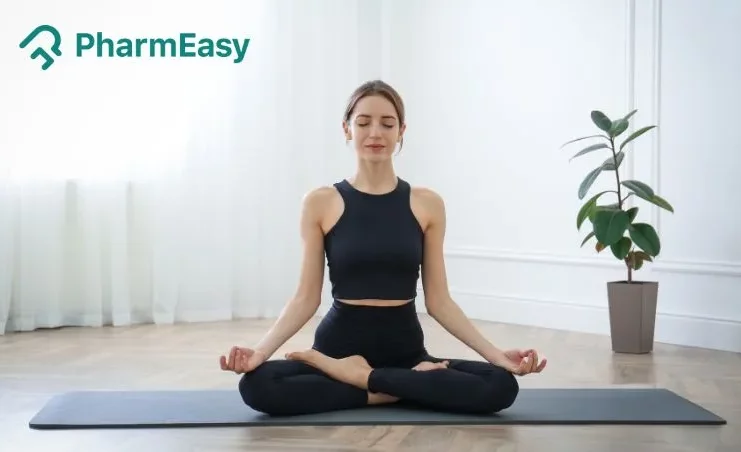



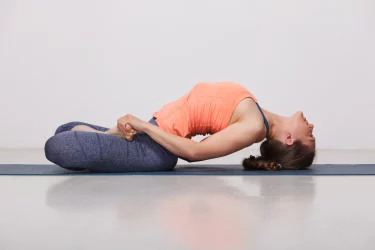
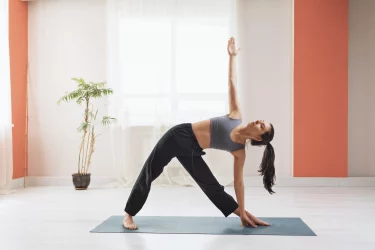
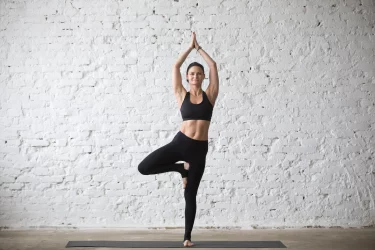
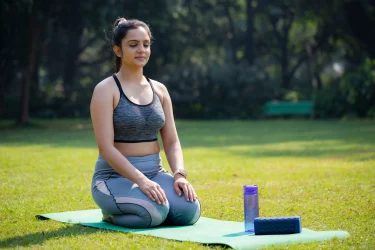
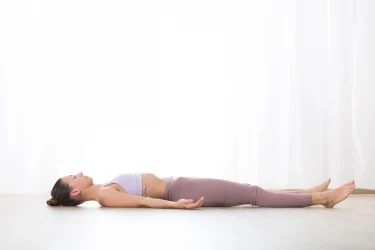
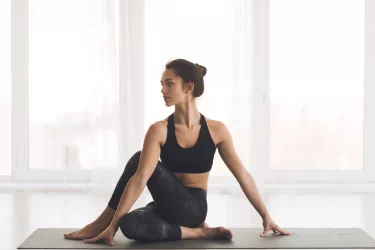
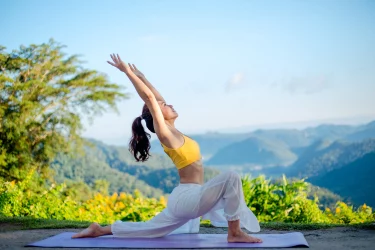

Comments